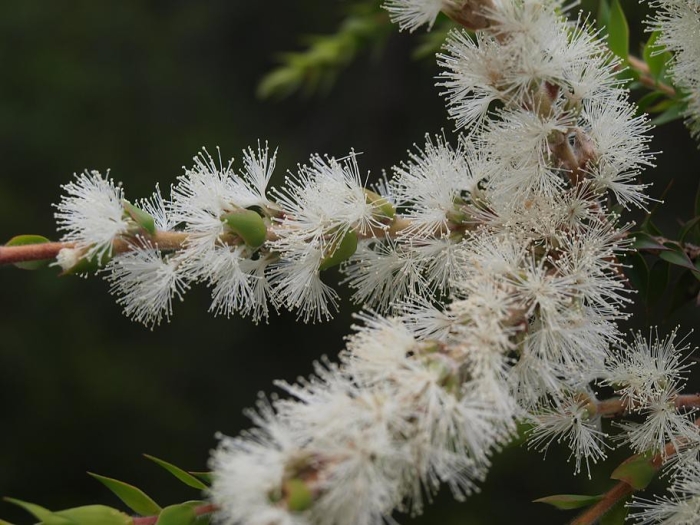Prickly-Leaved Paperbark
(Melaleuca styphelioides)
Prickly-Leaved Paperbark (Melaleuca styphelioides)
/
/

Greg Steenbeeke
CC BY-SA 2.0
Image By:
Greg Steenbeeke
Recorded By:
Copyright:
CC BY-SA 2.0
Copyright Notice:
Photo by: Greg Steenbeeke | License Type: CC BY-SA 2.0 | License URL: https://creativecommons.org/licenses/by-sa/2.0/ | Uploader: Orkology | Publisher: Flickr |


















Estimated Native Range
Summary
Melaleuca styphelioides, commonly known as Prickly-Leaved Paperbark, is an evergreen tree native to a range of habitats including coastal swamps, watercourses, and dry sclerophyll forests in Southeastern Australia. This species is adaptable to various ecological conditions within its native range, often found in areas that experience periodic flooding. Typically, it grows up to 20 m (70 ft) high with a dense, rounded canopy and drooping branchlets. The distinctive spongy bark is white or light brown and peels off in large strips, a characteristic feature of many Melaleuca species. The leaves are narrow, lance-shaped, and prickly to the touch. Flowering occurs in summer, presenting cylindrical "bottlebrush" spikes of creamy-white flowers that are 2 to 5 cm (0.8 to 2 in) long and 1 to 2 cm (0.4 to 0.8 in) in diameter, attracting a variety of pollinators. Following the flowering period, grey-brown, woody capsules appear in clusters along the branchlets, which are ovoid, stalkless, and 3 to 4 mm (0.1 to 0.2 in) in diameter.
The Prickly-Leaved Paperbark is valued for its hardiness, ability to tolerate waterlogged soils, and its ornamental bark and flowers. It is used in urban landscaping, as a windbreak, and for habitat restoration projects. Its deep-rooting nature allows for lawns and other plants to be grown underneath its canopy. For optimal growth, it requires full sun, low amounts of water, and soils with slow to medium drainage. While it is a robust tree, it can be susceptible to webbing caterpillars and scale insects. Additionally, it is important to note that Melaleuca species can become invasive outside their native range, so caution is advised when planting in non-native areas.CC BY-SA 4.0
The Prickly-Leaved Paperbark is valued for its hardiness, ability to tolerate waterlogged soils, and its ornamental bark and flowers. It is used in urban landscaping, as a windbreak, and for habitat restoration projects. Its deep-rooting nature allows for lawns and other plants to be grown underneath its canopy. For optimal growth, it requires full sun, low amounts of water, and soils with slow to medium drainage. While it is a robust tree, it can be susceptible to webbing caterpillars and scale insects. Additionally, it is important to note that Melaleuca species can become invasive outside their native range, so caution is advised when planting in non-native areas.CC BY-SA 4.0
Plant Description
- Plant Type: Tree
- Height: 25-40 feet
- Width: 15-25 feet
- Growth Rate: Moderate
- Flower Color: Cream, White
- Flowering Season: Spring, Summer
- Leaf Retention: Evergreen
Growth Requirements
- Sun: Full Sun
- Water: Low
- Drainage: Medium
Common Uses
Bee Garden, Bird Garden, Butterfly Garden, Fragrant, Hedges, Hummingbird Garden, Low Maintenance, Showy Flowers, Street Planting
Natural Habitat
Native to coastal swamps, watercourses, and dry sclerophyll forests in Southeastern Australia
Other Names
Common Names: Prickly Paperbark, Prickly-Leaf Paperbark, Prickly-Leaf Teatree
Scientific Names: , Melaleuca styphelioides, Leptospermum styphelioides, Melaleuca obliqua, Myrtoleucodendron styphelioides,
GBIF Accepted Name: Melaleuca styphelioides Sm.